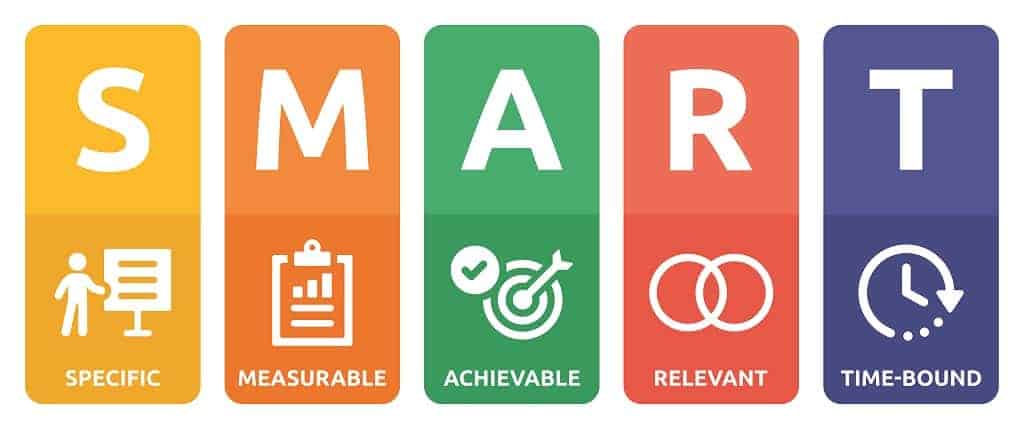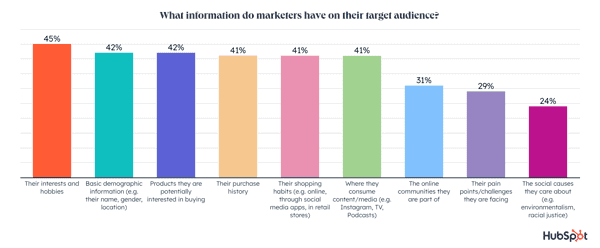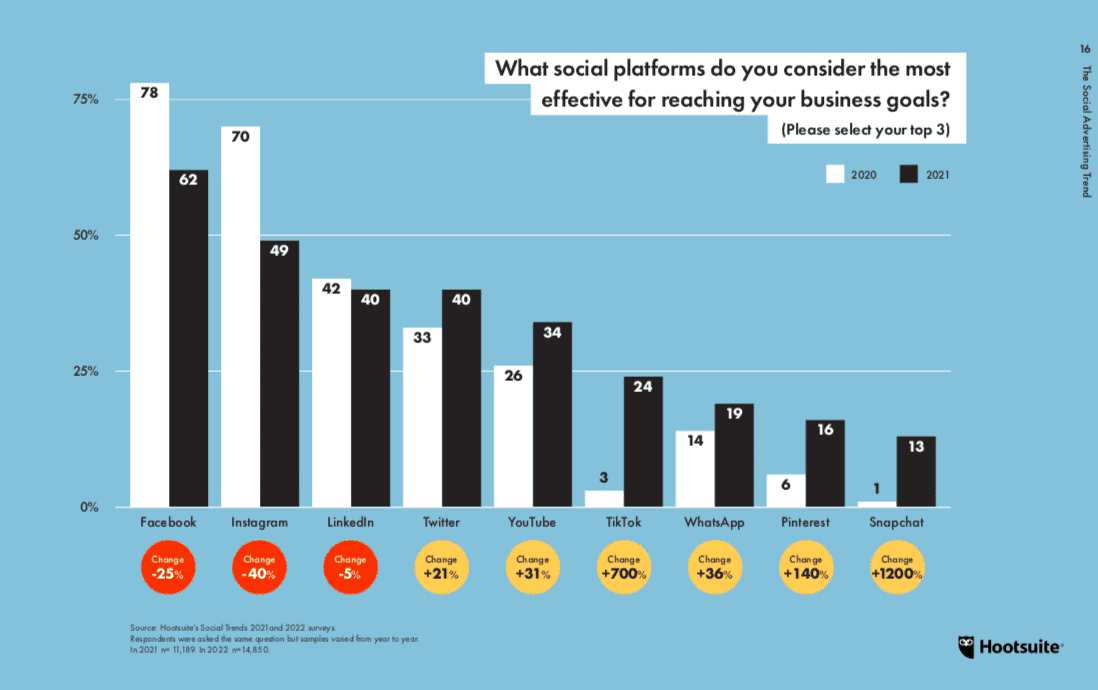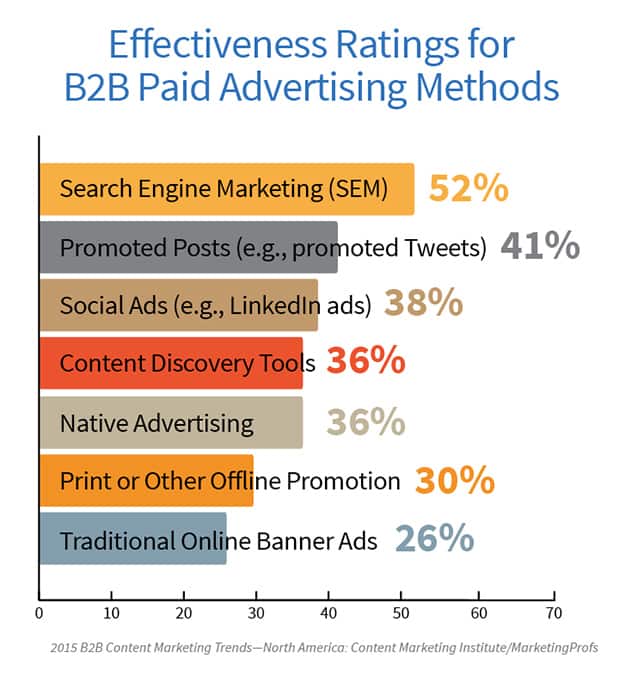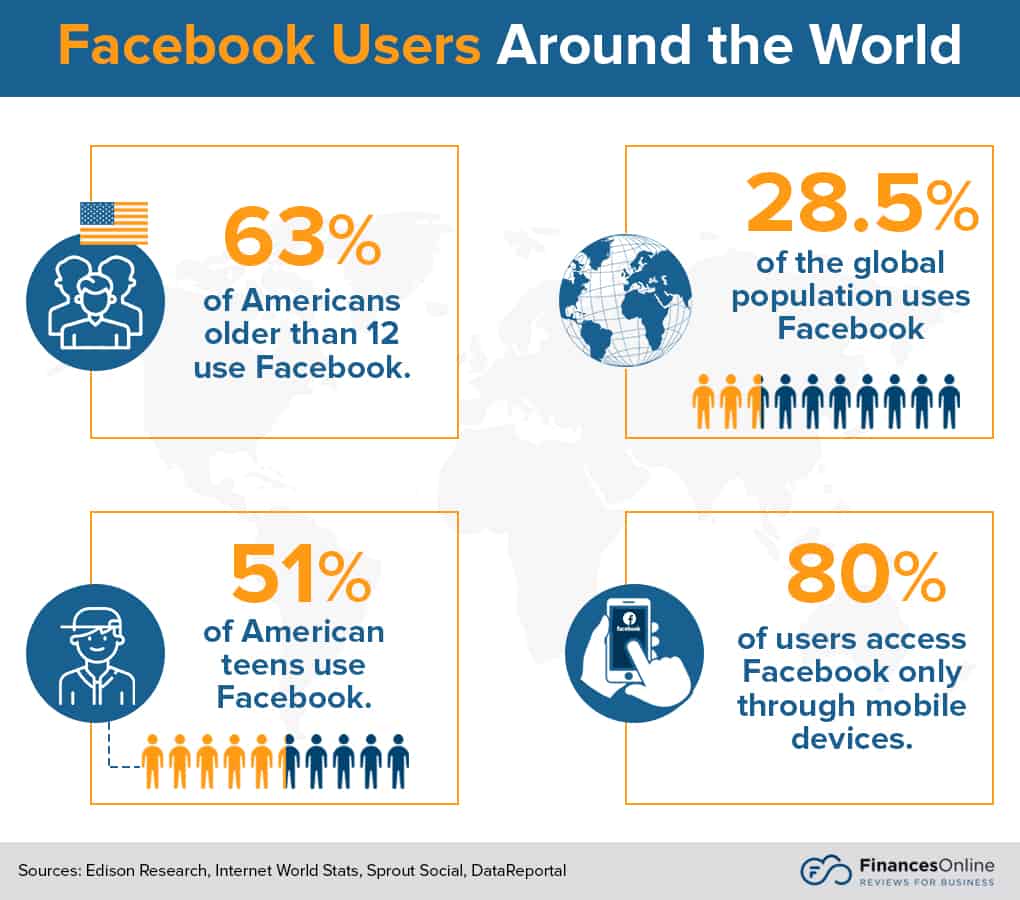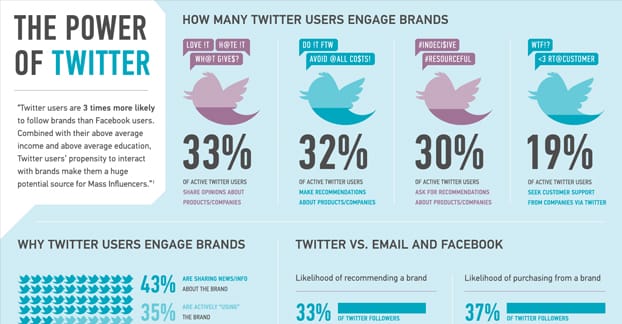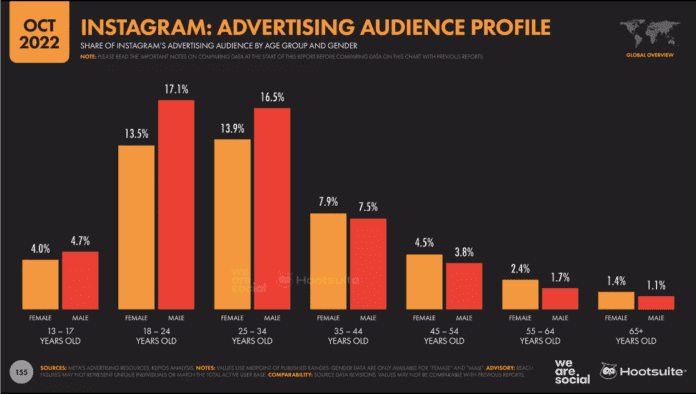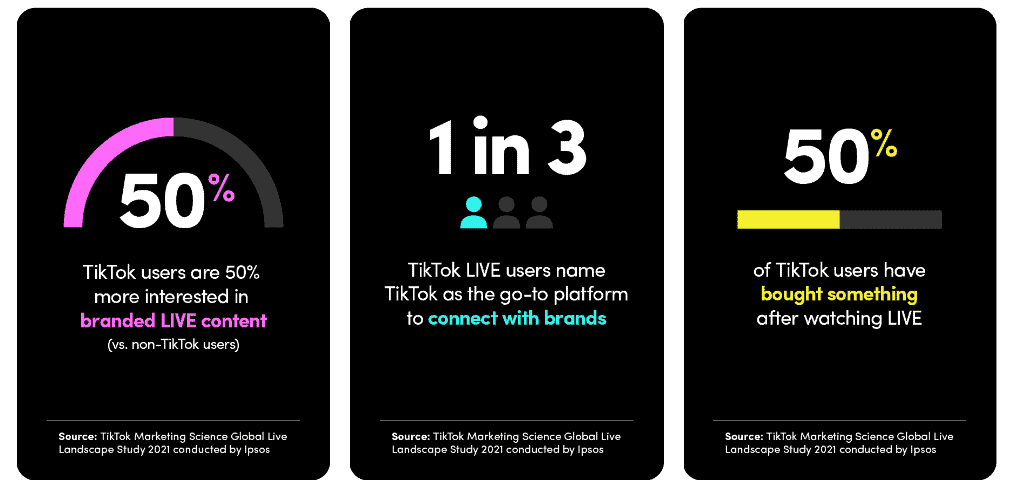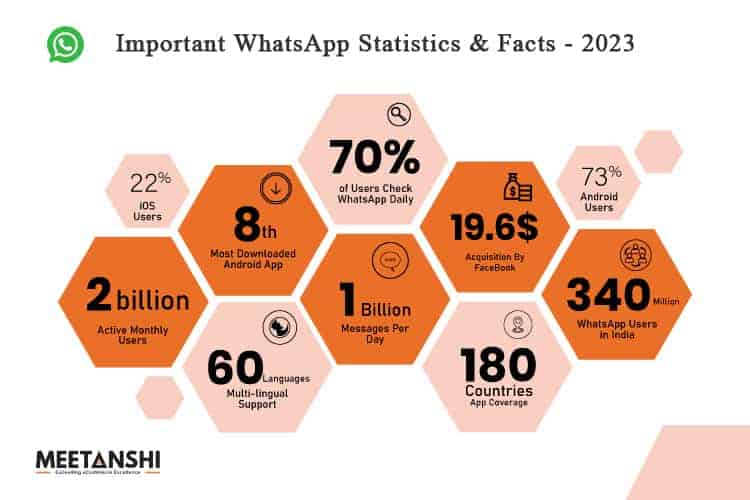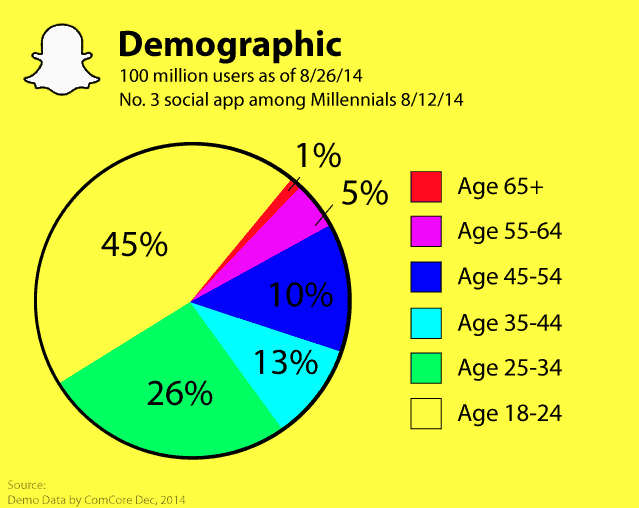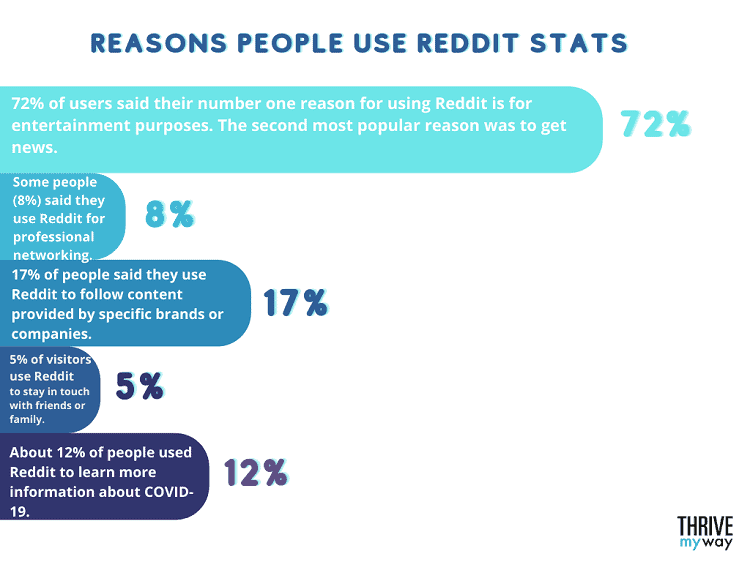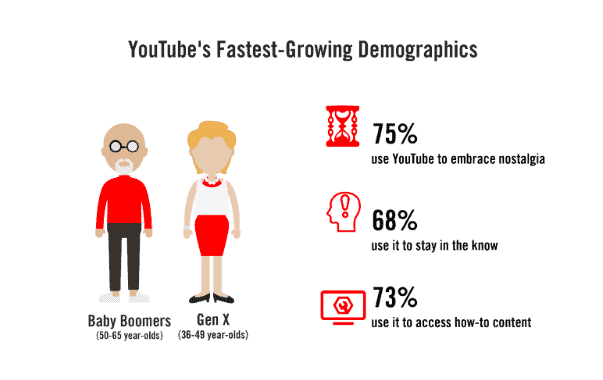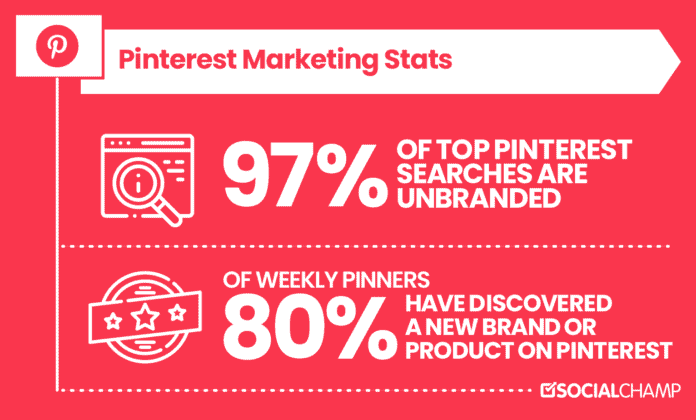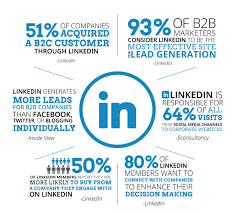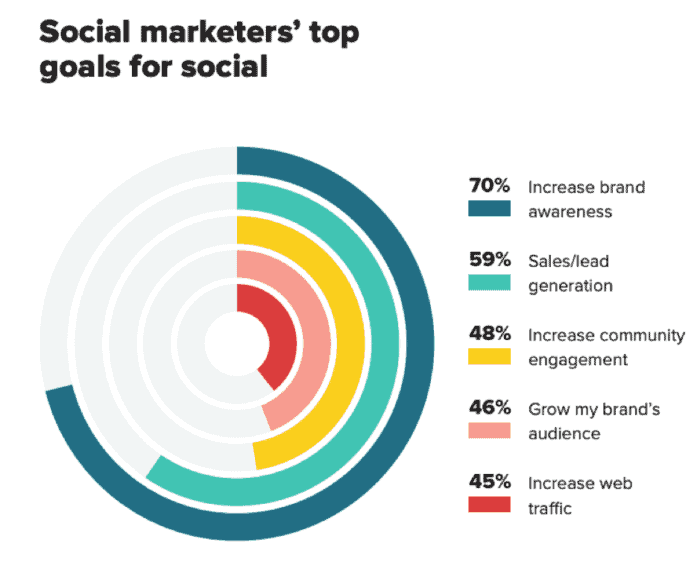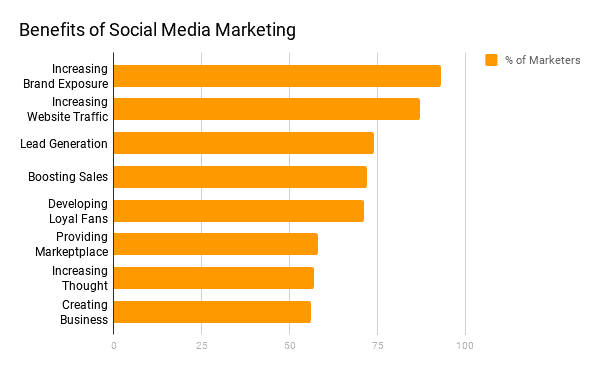Social media marketing.
Social media networks are powerful marketing platforms that deliver amazing results, which is why so many companies are starting to work with social media marketers.
Let's get started!

Top 1% Global Leader Digital Agency
Ranked by Clutch 2023
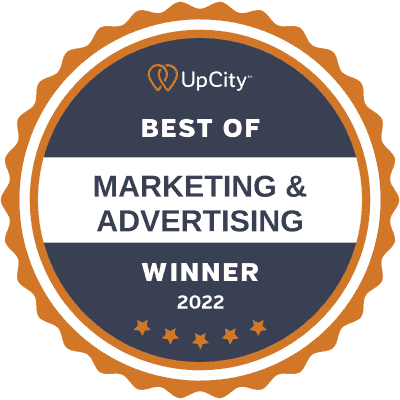
Top 1% Digital Agency in United States
Ranked by UpCity 2022

Fastest-Growing Companies in the USA
4 Years in a Row
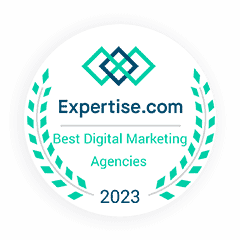
Top 1% Best Digital Marketing Award
Ranked by Expertise 2023

#2 Global Award Winner
Ranked by MASHABLE

Top 1% Award of Excellence Winner
Years 2020, 2021, 2022

500+ 5-Star Reviews in Google
Ranked by Our Customers

Top 1000 Global Digital Agency
Ranked by Clutch 2022

#1 Global Digital Agency
Ranked by Business Journal
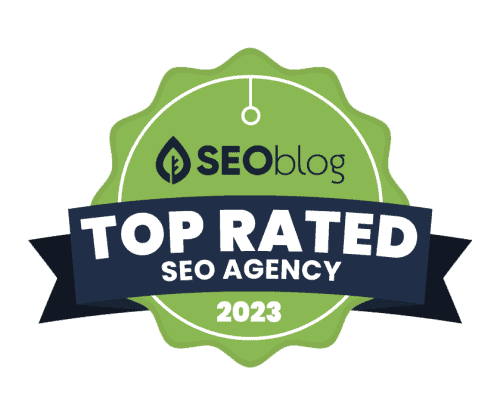
Top Rated SEO Agency
Ranked by SEO Blog 2023

Top Ecommerce Development Company
Ranked by Selected Firms

Top Web Development Agency
Ranked by Design Rush

Top 1% Global Leader Digital Agency
Ranked by Clutch 2023

Top 1% Digital Agency in United States
Ranked by UpCity 2022

Fastest-Growing Companies in the USA
4 Years in a Row

Top 1% Best Digital Marketing Award
Ranked by Expertise 2023

#2 Global Award Winner
Ranked by MASHABLE

Top 1% Award of Excellence Winner
Years 2020, 2021, 2022

500+ 5-Star Reviews in Google
Ranked by Our Customers

Top 1000 Global Digital Agency
Ranked by Clutch 2022

#1 Global Digital Agency
Ranked by Business Journal

Top Rated SEO Agency
Ranked by SEO Blog 2023

Top Ecommerce Development Company
Ranked by Selected Firms

Top Web Development Agency
Ranked by Design Rush
Social Media Marketing
In the halcyon days of traditional marketing, the idea of using social media channels to engage people directly wasn't even a dream in most marketers' heads. The majority of marketing campaigns were a one-way street, with billboards, print media, and TV and radio ads all sending messages out into the world with no way for the world to respond but through its collective wallet.
The rise of digital marketing changed all of that, with social media networks transforming from places where people could connect with their friends into powerful marketing platforms.
And those platforms (at least when you get this aspect of online marketing right) deliver amazing results, which is why so many companies are starting to work with social media marketers.
You probably have a few profiles set up on the likes of Facebook or LinkedIn yourself, though, which begs the question:
Do you have a social media marketing plan, and (if you do) have you any idea how to measure its success?
Surprisingly, the answer to the second question, at least for most companies, is that they have no idea, as these stats from Andrew Macarthy indicate:
Despite the fact that most companies get why social media marketing is a good thing, a staggering 83% have nothing in place to help them to measure the ROI of their social efforts. Over half (56%) struggle even more when multiple social media channels come into play, with 54% also saying that they have no idea how their social media ROI (assuming they know it) integrates into the rest of their company’s goals.
Achieving social media platform mastery through intelligent strategies is the key to solving these problems. And with NEWMEDIA by your side, you’ll have a digital marketing company that can finally demonstrate (and wield) the power of going social.
What Is a Social Media
Marketing Strategy?
Before you can even think about setting up any social media marketing campaigns, there’s an important question to answer:
What is social media marketing, exactly?
For many businesses (particularly those that don’t leverage social channels as well as they could), coming up with social media marketing strategies can feel like a chore. You have to deal with these “always on” platforms that give potential customers 24/7 access to your business so they can research, write about, share, and even complain about your company.
Sure, it’s great to have multiple platforms on which to share your message. But with so many platforms to choose from (and different social media strategies for each), you might feel like you’re trying to keep a dozen plates spinning with both hands tied behind your back.
Thankfully, social media marketing isn’t as complicated as it first appears as long as you know how to focus your digital marketing efforts in the right direction. That means less aimless posting where you put something (anything!) up on your profiles to grab the attention of social media users. Instead, your marketing efforts boil down to four key actions, which combine to help you create great social media campaigns and, as importantly, manage those campaigns for ongoing social media success.
So, if we boil social media marketing down to the bare basics, there are four main activities:
- Creating and optimizing your social media profiles.
- Posting content onto social platforms so you can attract social media followers and get people sharing cool stuff about your business.
- Responding to what people say to you (or share about your business).
- Engaging with anybody and everybody on social media who can help you, ranging from the community you’ve built to influencers who can turn the tide of public sentiment in your favor.
Get those four core pillars right (with the help of the digital marketing experts from NEWMEDIA) and you’re in the perfect position to transform social media from nuisance to marketing nirvana.
The Elements of a Good Social Media Strategy
The four pillars alone do not a great social media marketing campaign make. Your social media marketer should bring the following elements to the strategy they create if you stand any chance of getting a return on your social dollar.
Set SMART Goals
Every company sets goals.
Not every company sets SMART goals, with “SMART” being an acronym that stands for the following (courtesy of Cultivate Advisors):
Let’s dig into what each of those words means:
- Specific – Outline precisely what you want to achieve with your content creation and social media activity. There’s no “we’ll post it and see what happens” when you set SMART goals.
- Measurable – Don’t send something out into the social world and live in blind hope that you’ll get a response. Measure everything. Did a campaign work? Did it fail? If it failed, then why? If it worked, what made it so great?
- Achievable – Shooting for the stars is an admirable philosophy, except when it leaves you lost in the vastness of space. In other words, a small local business can’t assume it’s going to get the brand recognition of a multi-national company with a few social media posts. The goals you set have to be goals you can achieve.
- Relevant – Relevancy is all about asking why. Why does your social media campaign matter to your business? Why should your target audience care about what you post? If what you put on social media platforms isn’t relevant, people aren’t going to care about it. And if people don’t care (or respond negatively), your strategy isn’t relevant to your company’s goals.
- Time-Bound – Some people use “Timeliness” for the “T” in SMART, but the idea is the same. Any goal you set for social media marketing needs a start and end date. In other words, you can point to the goal and say, “This is what I want to achieve, and this is when I’m going to achieve it.”
Learn as Much as Possible About Your Target Audience
It seems like the most obvious thing in the world to say that you need to know who your target audience is to master social media advertising. And with social channels giving you so many tools to target specific people (with ad platforms often allowing you to target based on everything from age and gender to personal interests), it pays to know your audience.
And yet, most companies know far less about their customers than they should, as this chart from HubSpot explains:
Amazingly, less than half of marketers (45%) can tell you anything about their ideal audience’s interests or hobbies. Given that these are both things you can use to target social media content, the fact that 55% of marketers don’t know them is likely one of the chief causes of social media campaign failure.
There’s another stat from this chart that deserves attention – only 31% of marketers know what communities their customers are in. That means 69% of marketers couldn’t even tell you what social media channels they need to use to reach their audience. If you fall into that 69%, your social media campaigns are like shouting at a brick wall. You can make all of the noise you want but nobody will be around to hear it.
The good thing about social media is that it allows you to do two things:
- Target your posts and ads to super-specific audience segments
- Learn more about how those audience segments react to the content you share
Combine the two and you can use social media marketing to put your company into the minority that actually knows a little something about their customers.
Run a Competitive Analysis
Let’s think about what the average business (i.e., one that doesn’t really use social media) tends to do when it decides it wants to get social.
The company sets up a few profiles on the platforms it knows about, which usually means Facebook and Twitter. After taking some time to acclimate themselves to how these platforms work, they do the sensible thing and check out their competitors. This step is a great start because what competitors do and say (as well as how they respond to their followers) can indicate what another business needs to do and say to reach people.
With this “competitor analysis” completed, the company starts posting the same type of content, doing little more than copying, tweaking, and pasting posts. They expect the same response as they saw on the competitor’s channel, but they end up getting nothing.
Why?
Because the scenario we just described isn’t a real competitive analysis. It’s a plagiarism job, the likes of which would have any self-respecting schoolteacher stamping a test with a big fat “F.”
A real competitive analysis starts the same way as our little scenario – locating and checking out the profiles of competing businesses. But from there, you go digging into the data to figure out who follows your competitors, why they follow, and what your competitors fail to do that could help them (or better yet, you) to grow an audience.
You’re looking for the various strengths and weaknesses each account shows you, with the accumulated data you gather highlighting the opportunities that are waiting for you. Think of competitive analysis as forming the key that opens the social media door, while the strategy you create is the thing that gives you the strength to walk through that door.
Figure Out Your Current Social Strategy (And How it Could Change)
Imagine that you’re a pirate sailing the high seas. With your parrot on your shoulder (and your peg leg just about holding up), you pull out your map and see the classic “X marks the spot” scenario. The map shows you your destination (that’s what the big X is for), but it doesn’t show you something that you really need to know – where you are right now.
Our point is that having no idea about your starting point makes it impossible to get to where you need to go. You’ll find yourself lost in the vastness of the open seas, without a clue which way to turn so you can set sail toward that big “X.”
In social media terms, most companies have at least some sort of presence on a social media channel. They’ve set up profiles because they know that over 4 billion people use social media, and they can’t afford to miss out on marketing to over half of the world’s population. But to create a strategy that sails their social ships right into the view of the people who need to see them, they need to know where they’re starting.
In other words, what are they doing right now that’s helping (or hurting) their ability to get to where they need to go?
If you can answer that question, you can start charting a course to the treasures of engagement, traffic, and sales that social media provides.
Set Up on Relevant Social Media Channels
During the early days of social media, it was pretty easy to figure out what channels to use because there were only a few available. Once you had accounts on Facebook, Twitter, and LinkedIn, you were set up to start talking to people in the B2B and B2C spaces. While that’s still true today (to a certain extent) there are a lot more players in the mix as we get deeper into the 2020s.
With more platforms comes more choices, with those choices mattering, as this chart from HubSpot displays:
This chart shows us that the tides of opinion are changing when it comes to which social platforms help companies to achieve their business goals. Measuring data between 2020 and 2021, it finds that 25% fewer marketers believe Facebook is the most effective platform (though it still comes top with 62% of marketers saying that it’s effective). We see similar declines for Instagram and LinkedIn, both of which are stalwarts of the social game. Plus, newer players, like Snapchat and TikTok, are becoming more effective for businesses as they evolve.
So, what does this tell us?
If you think it’s telling you to ditch Facebook and LinkedIn for the newer wave of social media platforms, you’re not necessarily right. What this really tells us is that there are a ton of channels out there, each with its own audience. It’s your job is to figure out where your people hang out so you can communicate with them. That’s a huge part of social media marketing (which NEWMEDIA helps you with), and we’ll dig deeper into what each of these channels offers in just a moment.
Create Engaging Content for Social Media Posts
For as much as we talk about social media marketing being different from search engine optimization or paid ads, the truth is that they all come down to the same thing – the quality of your content. Provide content that people care about (and want to share) and you’ll succeed, but write a load of guff that doesn’t connect and nobody’s going to care about your social media presence.
The question you need to answer is, what type of content should you share with your social followers? Part of the answer to this question lies in who your followers are, i.e., who are you talking to, and what type of content are they likely to consume? But we also get some insight into the most effective types of content to share on socials from these stats (courtesy of Sprout Social):
This survey of marketers tells us that over half (54%) say that video content is extremely effective on social media, with about the same number (53%) pointing to images as being the most effective. Stories and live videos each have about a quarter of marketers throwing their weight behind them (26% and 25%, respectively), while the traditional text-based post has 30% of marketers pointing to it as a top performer.
If we take these stats alone, we’d assume that visual content outperforms textual content, though it’s not quite so simple. The reality is that the research you do (both into your customers and the platforms you use) reveal what type of content to create. NEWMEDIA does that research and handles the content creation aspects of succeeding on socials on your behalf.
Set Up Paid Social Advertising
If you’ve already explored digital marketing, you’ve probably come across paid ads and search engine marketing, both of which let you hand over money to put your ads in front of more eyeballs. Social media was a little behind the game when it came to paid online ads, though they’re not a crucial part of your marketing strategy.
How crucial?
Check out this chart from Content Marketing Institute, which reveals the effectiveness of various forms of paid ads:
Search engine marketing comes out on top, with 52% of marketers pointing to it as the most effective form of paid online B2B advertising. But check the next two results and you’ll see a pair of paid tactics you can use on social media – promoted posts and social ads.
Over two-thirds of marketers (38%) say that paid social media ads deliver the goods for their B2B companies, while 41% say that promoting posts (such as sponsoring their own posts on Twitter) helps them to get traction. For further reference, paid social strategies come out ahead of using content discovery techniques and traditional offline promotions, such as print advertising.
The elements up to this point have all dealt with the organic aspect of social media marketing, which is the stuff you can do without having to pay much to attract a natural following. Paid ads require more upfront monetary investment (as well as more time to set up), though the returns you get for your business are twofold:
- Get in front of more people
- Control exactly who sees your posts.
NEWMEDIA helps you build paid ad campaigns to go along with your organic social media marketing efforts.
Track Your Social Media Presence
Have you ever tried to go on a diet?
If you have, you know that most people start their diets feeling very excited about the future. They create meal plans and build exercise routines, all with the aim of shedding a few pounds. The problems arise a month or two into the diet when everything starts to feel like a chore, and the diligent calorie counting they’d done up until that point goes out the window. An extra treat here and a large meal there devolve into the new normal, and before you know it, the diet is out of the window and all of that hard work is for naught.
It’s a bigger problem than you might think, with Scientific American pointing out that about 80% of people will be back to their pre-diet weight within 12 months of shedding their pounds.
You’re probably asking how any of this relates to social media.
Simple – it’s all about tracking.
Diets fail (eventually) because people get sloppy and stop tracking their progress. In some cases, that’s a result of overconfidence (“I know what I’m doing now, so I don’t need to track”), whereas other dieters fail because they get tired of the grind and simply stop paying attention to what they eat.
Similarly, a ton of great social media marketing campaigns start out strong before trailing off because the marketers don’t do enough to track results. With social media changing constantly (just think about the number of new platforms that have emerged over the last decade), you need to stay on top of your campaigns by keeping on top of analytics and making changes as and when needed.
Otherwise, you end up like 80% of dieters – proud of your initial efforts but lost when it comes to maintaining your momentum.
Digging Into the
Social Media Platforms
Let’s start with some good news:
No matter which social media platforms you use for marketing, the above elements all come into play in some way or another.
Now, the bad news:
You’ve got to be choosy when it comes to which platforms you use for your social media marketing because trying to do them all is like trying to stretch a rubber band over a bowling ball – eventually, the elastic snaps. Or, in business terms, you’ll spend more money than you have on campaigns that don’t have your full attention, leading to social media marketing losing money for your company.
So, which social media marketing platform(s) should you choose?
We can’t give you the answers outright (we’d need to learn more about your business and its target audience first), but we can give you some insight into what each platform offers.
The granddaddy of social media marketing (sorry, MySpace), Facebook is the go-to platform for most who are new to using social to speak to potential clients. It’s also one of the most effective platforms around, as these stats from Finances Online:
When it comes to pure numbers, Facebook is the clear leader of the pack. Almost two-thirds of Americans over the age of 12 (63%) have Facebook profiles, with a staggering 28.5% of the world’s population using the platform. If we run some numbers, the world’s population is currently about 8.029 billion (according to Worldometers), so doing some quick math tells us that about 2.288 billion people are on Facebook.
Better yet, there are more youngsters using the platform than you might realize, as these stats highlight that just over half of American teenagers (51%) have Facebook accounts. The point is that the numbers (at least when it comes to users) are stacked in Facebook’s favor, making it a great place for B2C businesses to connect with their audiences.
Who Succeeds with Facebook?
- Companies that want to hit as large an audience as possible
- B2C companies (though plenty of B2B firms can reach customers using Facebook)
- Anybody who wants to use paid social media advertising
- Companies that have several types of content to share with users
- Businesses that want tons of data and metrics giving them insight into their audiences
Forget about all of the controversy (and chaos) that has come with Elon Musk’s takeover of Twitter because the platform is still extremely powerful when it comes to marketing to a large audience.
Why?
Engagement is the key to Twitter, as its short-form version of posting (coupled with the ease with which people can tag their favorite brands) makes it the best place for people to communicate with companies and vice-versa:
Follows throws a lot of stats at us in a very small space in this picture, though there are a few that we want to point out.
Firstly, 43% of Twitter users say that they actively share information about the brands they follow, though this can be a double-edged sword as users are just as likely to share bad news as they are good news.
Exactly a third (33%) say that they use Twitter to share their opinions about brands, with about the same amount (32%) saying they use the platform to recommend stuff that they love. Best of all, 37% of Twitter followers say they’ve bought (or would buy) products from the brands they follow.
There’s also a sneaky stat hiding in the text of this image – Twitter users are three times more likely to follow a brand on Twitter than Facebook users are to follow that same brand on Facebook.
So, where Facebook is the place to be if you want to market to a huge (or targeted) audience, Twitter reigns supreme when it comes to direct engagement.
Who Succeeds with Twitter?
- Companies that want to engage directly with their consumers
- Anybody who wants to build brand awareness
- People who can say a lot in a small number of words
- Businesses that use social media as much to identify (and create) trends as they do to sell
- Any company that wants to create a dedicated following
Instagram is far more than a place to share pretty pictures and snappy videos, as the platform has become the main hangout for an entire generation of influencers (and their followers). What’s more, it’s the place to be if you want to market your product to the disposable cash-rich 18-34 demographic:
Hootsuite’s stats show us that 27.4% of Instagram’s advertising audience is comprised of women aged 18-34, with a further 33.6% being men who fall into the same age bracket. Moreover, that means that 61% of Instagram’s audience is in the 18-34 demographic, making it clear that it is the social media marketing platform of choice for companies that market to millennials and the upcoming Generation Z demographics.
As an aside, Instagram is one of the main home bases for today’s influencers, meaning those who want to leverage the power of persuasion through people to appeal to an audience need to get on the platform.
Who Succeeds with Instagram?
- Companies that appeal to the 18-34-year-old demographic
- Anybody who can use influencers to promote their products
- Businesses that have attractive products or sell a “lifestyle” to their users
- Companies that wish to future-proof their social media marketing by adopting a platform that skews younger in terms of its audience
TikTok
If Instagram is likely the place where Generation Z will hang out in the future, TikTok is where you’ll find a lot of that demographic right now. The new kid on the social media block has grown by leaps and bounds over the last five years, transforming from a Vine rip-off (with a musical element) into a legitimate marketing platform.
Going live is the big thing on TikTok, as these stats from Hootsuite demonstrate:
According to this survey, about a third of TikTok LIVE users (TikTok LIVE being a way for brands to share videos in real-time) believe that it’s the best way to forge connections between brands and their customers. But the real headline here is that 50% of people who use TikTok have bought a project after watching a TikTok LIVE video that promotes said product.
Combine the power of LIVE videos with the fact that a new generation of influencers is coming up on TikTok, and you have a platform that’s ideal for companies that sell lifestyle products and those that have the flexibility to advertise in real-time.
Who Succeeds with TikTok?
- Brands that are willing to market themselves in real-time
- Companies that appeal to the Generation Z demographic (i.e., teenagers and young adults)
- Anybody who wants to leverage influencer marketing
- Businesses that can master the short-form video approach of TikTok
“Wait a second,” we hear you say. “WhatsApp is a messaging platform. I can see how it replaced SMS messaging as a marketing technique (especially because it’s cheaper), but how does it fit into the social media marketing equation?”
These stats from Meetanshi shed some light on the situation:
Since its $19.6 billion acquisition by Facebook, WhatsApp has become the platform to use if you want to directly message people in your community. About 70% of people who have WhatsApp accounts open the app daily to check their messages, with the app’s 2 billion users sending a billion messages per day (that’s one message for every two users).
Yes, you’re likely to use WhatsApp as a replacement for traditional SMS marketing. But the ability to create groups lends the app a sense of community that you don’t get with SMS. When combined with the huge audience, it makes WhatsApp a surprisingly effective player in the social media marketing landscape.
Who Succeeds with WhatsApp?
- Any business that’s looking for a cost-effective alternative to SMS messaging campaigns
- Brands that want to build private communities using WhatsApp groups
- Companies that want to parlay a Facebook following into a more direct messaging setting
Snapchat
Just like WhatsApp, Snapchat is a great way to run messaging campaigns with a community, with the added bonus being that brands can create their own accounts to share short-form videos.
Think of the app like a Frankenstein’s baby of TikTok and WhatsApp, with the added bonus (or issue) of content impermanence. In other words, the stuff you share on Snapchat disappears after 24 hours (or less), making it a great choice for short-term campaigns but perhaps not the best social media platform for multi-month or multi-year initiatives.
It’s also another great platform to use when it comes to appealing to younger audiences, as these stats from Smart Insights demonstrate:
It’s clear the Snapchat market skews younger, with 45% of its users falling into the 18-24 demographic. Going an age group up and you see a further 26% of people falling into the 25-34 demographic, meaning a combined total of 71% of Snapchat’s users are aged between 18 and 34.
That’s a lot of young people (with plenty of disposable income) that you can market to with a combination of your brand’s own account and the many influencers that call the platform home.
Who Succeeds with Snapchat?
- Companies that appeal to the 18-34 demographic
- Brands that favor short-term campaigns ahead of long-term initiatives
- Anybody who wants to take advantage of influencer marketing
- Brands that can create short-form (and attention-grabbing) video content
It’s weird to call Reddit the newcomer to the social media marketing block, given that the platform first appeared in 2005. But Reddit has always been a little strange from a marketing perspective, with the free-for-all approach the platform takes in terms of the subreddits users can create, giving it a bad image in some circles.
Still, there’s no denying that Reddit is emerging as a powerful platform for brands (especially those that want to build communities), as these stats from ThriveMyWay indicate:
The vast majority of Reddit users (72%) say they use the app for entertainment purposes, which is great news for brands in that industry. But it’s the stats below that interest us the most, with 17% of people saying they use Reddit to follow their preferred brands, while 8% recognize the platform’s network-building potential.
Combine those numbers with the fact that Reddit allows you to create forum-like communities (called subreddits), and you have a great way to engage your audience.
Who Succeeds with Reddit?
- Brands that want to build (and interact with) their own communities
- Influencers and celebrities who can take advantage of the AMA (Ask Me Anything) format
- Brands that deal in entertainment, such as videogame developers and music moguls
- People who want to network outside of LinkedIn find Reddit to be a great alternative
YouTube
It’s obvious to say that YouTube is the platform of choice for video marketers (especially given the platform has 2.1 billion monthly users), but what many underestimate is how effective YouTube is at appealing to an older audience. Check out these stats from Foundation Marketing:
They highlight that YouTube’s two fastest-growing demographics are Generation X (aged between 36 and 49) and Baby Boomers (people aged 50 to 65). The percentage figures also shed some light on why these older demographics are embracing a platform that used to be the domain of youngsters. Over two-thirds (68%) use YouTube for their news, and nearly three-quarters (73%) use it for how-to content. Combine those uses with the nostalgia factor (75% say they love YouTube because it lets them enjoy times gone by), and you have a platform that’s as effective in reaching older generations as it is current ones.
This isn’t to say that YouTube is no good if you have a younger audience, as the platform’s viewership still skews younger. It’s also home to “YouTubers,” the proto-influencers who are perfectly positioned to offer sponsored content that advertises your brand to their viewers.
Who Succeeds with YouTube?
- Brands that capitalize on nostalgia to appeal to an older audience
- Companies that can use sponsored content to reach new people
- Any business that creates its own videos (for its own channel or for use as ads on other channels)
- Businesses that want to build communities around their video content
Discovery is the name of the game with Pinterest, which is a social media channel that allows users to “pin” their favorite pictures to online boards. Think of it like an online photo album or, better yet, a vision board that people can use to cobble together images of stuff they want to add to their lives.
Now, the interesting thing about Pinterest is that it’s not necessarily a channel that your company will use to create its own content via a profile. The platform is more about indirect marketing, as these stats from Social Champ show:
The first stat is worrying for brands (at least on the surface), as 97% of all searches made on Pinterest are for non-brand-related terms. To put that into context, somebody who’s looking for new decorating ideas isn’t going to search for a brand in that space. They’re going to search for a term like “new decorating ideas” or “home interior ideas for the fall.”
But it’s the second stat that sees Pinterest redeem itself, as four out of every five users (80%) say they’ve discovered a new product or company thanks to the boards that they find from their non-branded searches.
The point here is that people aren’t using Pinterest to connect with brands directly, but they are using it to get ideas and indirectly discover products. If you have pretty pictures (or a product that can be used to create attractive imagery), you’re in a good place to make Pinterest work for you.
Who Succeeds with Pinterest?
- Brands with attractive products
- Companies that are willing to exercise patience as others share what they have to offer
- Visually creative companies that can create stunning boards using their own products
We end with an old stalwart of the social media game, especially for companies that are in the B2B sector. Far from being a place to share resumes and make a few connections, LinkedIn has increasingly become the place to go if you want to establish yourself as an expert in your field. And beyond creating posts (which you can use both to share knowledge and push traffic toward your website), LinkedIn offers ways for you to connect with and message potential prospects.
The power of LinkedIn as a lead generation tool is ably displayed in these stats from Neil Patel:
The headline stat here is that 93% of B2B marketers count LinkedIn as their most effective social channel for lead generation, which is buoyed by the fact that 80% of LinkedIn users connect with brands on the platform to help them make decisions. What’s more, half of users say they’re more likely to buy from a company after they’ve used LinkedIn to engage directly.
And for the B2C companies out there, LinkedIn isn’t just a B2B platform, as over half (51%) of B2C companies say they’ve acquired customers using LinkedIn.
Who Succeeds with LinkedIn?
- B2B businesses that want to generate leads
- Companies (or executives) who want to share and leverage their expertise
- Some B2C companies, which will become more prominent as LinkedIn’s userbase grows
- Any business that can use its expertise to tempt buyers into decisions
What Social Media
Marketing Agencies Achieve
for Business Growth
We’ve covered a lot of information so far, so let’s get into the meat and potatoes of social media marketing. What does it bring to your business?
Help You Define Your Target Audience
Earlier, we shared stats that showed you that most marketers don’t know anywhere near enough about their audience. No matter where you looked, over 50% of marketers (and in some cases, closer to 70% or 80%) couldn’t tell you what their ideal customers’ interests, hobbies, pains, or buying intentions are.
Social media marketing doesn’t just help those that know what their audiences look like to target posts and ads to specific demographics. Every social media channel is stat-rich, with your profile (and the analytics that lie behind it) being key to teaching you more about who engages with your brand. That’s information you can take to the bank, both when using social media and in every other area of your business.
Increase Brand Awareness
If people don’t know who you are, they can’t buy from your business. You need a way to invite people to take the first step in their buyer’s journey, which means teaching them about who you are and what you do. Marketers know that social media is ideal for creating brand awareness, as this chart from Smart Insights shows:
Over two-thirds of marketers (70%) say that it is their top goal for social media marketing, beating out those who name lead generation (59%) and growing their brands (46%) as their big goals.
Improve Your Search Engine Optimization (SEO) Efforts
We all know the basics of SEO – you create content (and generate links) so that your website’s pages rank high enough in search engines to draw in visitors. But what many underestimate is that social media marketing gives your SEO a boost, if not directly to your website, then at least to your search engine presence.
Think about it like this:
A company that has a website (and nothing else) can hope to get maybe a spot near the top of the rankings and a place in the local search pack. But if they add socials into the mix (especially if they have multiple social media channels), they have the potential to take over multiple spots on the first page of search results. More spots mean more potential clicks, meaning your socials become SEO behemoths of their own.
Draw More Website Traffic
As amazing as social media may be for building your brand (and helping a customer along on their buyer’s journey), your goal is always to sell more products. And to do that, you need to draw people to your website so you can sell to them more directly via a platform over which you have complete control.
The stats show that marketers recognize social media’s power when it comes to drawing website traffic, as this chart from Content Marketing Institute demonstrates:
Right below the 78% of marketers who say they believe that increasing brand exposure is a major benefit of social media, we see that about 77% of them say that their socials boost website traffic. More traffic means more opportunities to speak to your audience, meaning you’re going to get more leads when you go social.
NEWMEDIA's Social Media Services
We've dived deep into what social media marketing can do for your business, how to build a social strategy, and what platforms are available to you. Let's wrap up with the specific services NEWMEDIA provides.
Platform-Specific Social Media Marketing
Don’t take a spray-and-pray approach to creating social media profiles. NEWMEDIA offers platform-specific social media marketing to get your messages in front of the right audience.
Social Media Ads
Paid social media ads get results, both in terms of increasing exposure among people who don’t already follow your pages and generating leads by pulling people to your website. Create ad campaigns that are effective (and constantly tweaked) to hit the biggest possible audience.
Social Media Management Services
An unmanaged social media profile is like a plant that never gets water. Eventually, it’ll wither and die. For the low price of consistent vigilance, your social media presence can bloom into something that delivers constant results.
Paid or Organic Content Creation
We already touched on how content lies at the heart of any social media strategy. If you’re not a dab hand with a pen (or a Spielberg behind the camera), NEWMEDIA can create the content you need for paid and organic social campaigns.
Encourage User-Generated Content
User-generated content is the 21st century’s version of “word of mouth,” with every comment, like, and share being a virtual recommendation (or tongue-lashing) for your company. Harness what your users (i.e., followers) write to build brand awareness and strengthen other digital marketing campaigns.
Influencer Marketing
Getting the right influencers on board can lead to massive returns on your investment. Influencer Marketing Hub says the average business can get up to 11 times more ROI with influencers than it can with other digital strategies, though it’s not always that simple. NEWMEDIA connects you to the right people and enhances your influence across social media channels.
Community Management
A community with no oversight is like a neighborhood without a police patrol – it’ll eventually devolve into chaos. With community management, you get a team that keeps your people informed and can even invigorate them when you need a marketing boost.
NEWMEDIA
The Social Media Marketing Agency that Gets Results
By now, it’s clear that you need a social media agency fighting in your corner. Here’s why NEWMEDIA should be that agency:
- Expertise.com gave us the “Top 1% of Digital Marketing Companies” award in 2023, with Clutch naming us as one of the top 1,000 companies in the United States and UpCity also calling us one-percenters.
- We’ve worked with some major brands, including YMCA, Delta, and CBS Television, to help them turn their digital visions into realities.
- NEWMEDIA has handled over 4,000 digital marketing campaigns (and counting) for companies of all sizes.
- We do it all, meaning you can come to us with the need for a social media marketing campaign and then grow as we implement other online marketing techniques for your business.
So, what are you waiting for?
We’re ready to get social with you, so send us a message at [email protected] or call us at 303-860-6050 to start your journey with one of America’s leading social media agencies.

